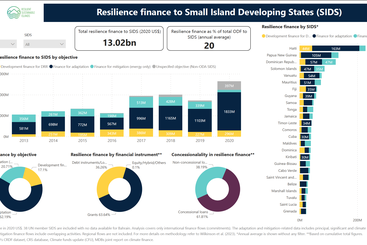Until now, it was unclear how much and which types of climate and development finance were being allocated to Small Island Developing States (SIDS) to build resilience. This paper provides clear evidence of the gap between vulnerability and allocation of finance.
SIDS have long argued that their unique condition, including their small populations and geographic location, makes them especially vulnerable to multiple climate impacts that they have had a negligible role in generating. Yet this vulnerability is barely accounted for in the allocation of development or climate finance, and only partially embedded in international organisations (IOs), including across the UN system, World Bank, and World Trade Organisation. This vulnerability will only increase, with climate change and disaster impacts driving higher and higher debt levels, which in turn undermine SIDS’ resilience and adaptation potential. Yet investments can and do increase SIDS’ ability to cope with external shocks, and to adapt and build resilience to future climate change impacts. This paper analyses finance flows for 38 SIDS between 2013-20 to quantify the gap between vulnerability and allocation of finance.
Related data: Resilience finance flows to Small Island Developing States
The new dashboard, created by RESI as a supplement to the report A fair share of resilience finance, quantifies finance flows to Small Island Developing States over a seven-year period (2013-2020).






